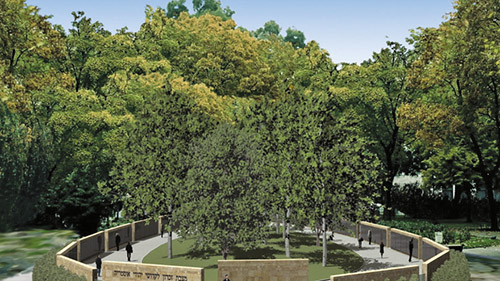
On the 83rd anniversary of Kristallnacht and in a clear gesture that it is finally taking public responsibility for its past, the government of Austria unveiled the Shoah Wall of Names Memorial, its first public Holocaust memorial. Located in Ostarrichi Park in the center of Vienna, it pays tribute to the 64,440 Austrian Jewish children, women and men who lost their lives during the Holocaust. Construction work on the memorial began in March 2020.
The ceremony was attended by Austria’s new Chancellor, Alexander Schallenberg; the Speaker of the Austrian Parliament Wolfgang Subotka; ministers and senior government; and officials from the European Union and members of the Jewish community. Israeli Minister of Diaspora Affairs Nachman Shai addressed the audience as the official representative of the State of Israel. Austrian President Alexander van der Bellen was scheduled to attend but is in quarantine after his secretary was diagnosed with COVID-19.
“It is all the more our task [of the Austrian government] to actively protect Jewish life in Austria and Europe, and to speak out against any form of antisemitism without any ifs or buts,” said Schallenberg. “With this wall, we pull their names and their history out of oblivion. We give them back their identity, their individuality and that part of their humanity. And they once again have a place in their homeland.”
“Antisemitism is not an issue that Israel or the greater Jewish people can solve,” Shai said. “It is the responsibility of nations and institutions around the world to take action against this ancient virus.”
The memorial is made up of 180 “Kashmir Gold” granite slabs. Each slab is one meter (3.2 feet) wide and two (6.5 feet) meters high. They were produced in India, the only location where they are available. After first being shipped to Italy where they were polished, they arrived in Vienna for engraving, which took seven months to complete.
Earlier in the day, a wreath-laying ceremony took place at the Judenplatz Holocaust Memorial site. Judenplatz was the center of Jewish life in Vienna during the Middle Ages. Today, the “Nameless Library” memorial—made of concrete and depicting rows of inverted nameless books representing the many victims of the Holocaust—stands at one end of the plaza. The memorial does not include the names of Austrian Jews killed in the Holocaust.
By Israel Kasnett/JNS.org













